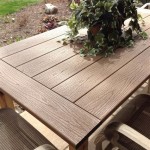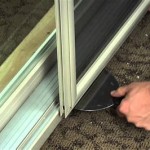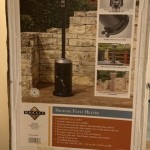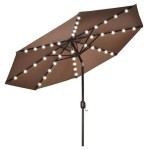Patio Slate Stone: A Comprehensive Guide
Patio slate stone constitutes a popular and durable option for creating aesthetically pleasing and functional outdoor living spaces. Its natural beauty, coupled with its inherent resilience, makes it a desirable material for various patio designs. Understanding the different types, properties, and installation techniques associated with patio slate stone is crucial for achieving a successful and long-lasting patio.
Slate, a metamorphic rock formed from shale or mudstone subjected to intense pressure and heat, owes its distinctive characteristics to its geological origin. This process results in a fine-grained, foliated rock that can be easily split into thin, even layers. The specific mineral composition of slate determines its color, ranging from shades of gray and black to hues of green, purple, and red. The presence of iron oxides contributes to reddish and brownish tones, while chlorite imparts greenish hues. The variation in color and texture ensures that each slate tile possesses a unique character, contributing to the overall aesthetic appeal of a slate patio.
The durability of slate is a primary factor contributing to its popularity as a patio material. Its resistance to weathering, frost, and chemical exposure makes it suitable for a wide range of climates. Unlike other paving materials that may crack or deteriorate over time, slate can withstand the rigors of outdoor use with minimal maintenance. This longevity translates into a cost-effective investment, as slate patios require less frequent repairs and replacements compared to those constructed from less durable materials. Proper installation and sealing further enhance the lifespan and performance of a slate patio.
Types of Slate Stone for Patios
Choosing the right type of slate for a patio involves considering several factors, including color, texture, size, and thickness. Different quarries produce slate with varying characteristics, and understanding these differences is essential for selecting the optimal material for a specific patio design. Some common types of slate used for patios include:
Vermont Slate: Known for its rich colors and durability, Vermont slate is a premium option often favored for its aesthetic appeal and resistance to weathering. It is available in a range of colors, including green, purple, and gray, allowing for diverse design possibilities.
Pennsylvania Slate: Historically a popular choice for roofing and flooring, Pennsylvania slate is also well-suited for patio applications. Its consistent quality and relatively uniform texture make it easy to work with and suitable for both traditional and contemporary designs.
Chinese Slate: Often a more affordable option, Chinese slate can offer a similar aesthetic to other types of slate at a lower price point. However, it is important to ensure that the slate meets quality standards regarding durability and resistance to weathering. Some varieties of Chinese slate may be prone to fading or chipping over time.
Brazilian Slate: Distinguished by its relatively smooth surface and consistent color, Brazilian slate is a popular choice for patios due to its ease of installation and maintenance. It is typically available in shades of gray and black, offering a sleek and modern aesthetic.
The selection of slate type should be based on aesthetic preferences, budget constraints, and the anticipated level of foot traffic and exposure to the elements. Consulting with a knowledgeable stone supplier can help in making an informed decision and ensuring that the chosen slate is appropriate for the specific patio application.
Beyond the origin-based classification, slate can also be categorized based on its finish. Natural cleft slate features a rough, uneven surface created during the splitting process. This finish provides excellent slip resistance and a rustic aesthetic. Honed slate undergoes a grinding process to create a smooth, matte surface. Honed slate is easier to clean and maintain but may be more susceptible to slipping when wet. Tumbled slate is processed to create rounded edges and a slightly textured surface, offering a balance between aesthetics and functionality. The choice of finish depends on the desired aesthetic, level of slip resistance required, and ease of maintenance preferred.
Installation Considerations for Slate Patios
Proper installation is paramount for the longevity and performance of a slate patio. A well-constructed base is crucial for preventing settling, cracking, and other issues that can compromise the integrity of the patio surface. The installation process typically involves the following steps:
Excavation: The first step involves excavating the area to the desired depth, typically around 6-8 inches. This allows for the installation of a compacted base material and the slate tiles themselves.
Base Preparation: A compacted base of crushed stone is essential for providing a stable and well-draining foundation for the patio. The crushed stone should be compacted in layers using a plate compactor to ensure proper density and stability.
Laying the Slate: Slate tiles can be laid using a mortar bed or a dry-lay method. A mortar bed provides a more permanent and stable installation, while the dry-lay method allows for greater flexibility and easier repairs. When using a mortar bed, it is important to use a mortar specifically designed for natural stone to prevent staining and efflorescence. When using the dry-lay method, a layer of polymeric sand is typically used to fill the joints between the tiles. Polymeric sand helps to stabilize the tiles and prevent weed growth.
Cutting and Shaping: Slate can be cut using a wet saw with a diamond blade. This allows for precise cuts and ensures that the tiles fit together seamlessly. It is important to wear appropriate safety equipment, including eye protection and respiratory protection, when cutting slate.
Sealing: Sealing the slate is recommended to protect it from staining, moisture damage, and fading. A penetrating sealer is typically used, which soaks into the pores of the slate and creates a protective barrier. The sealer should be applied according to the manufacturer's instructions. Regular resealing may be necessary depending on the type of sealer used and the level of exposure to the elements.
Attention to detail and adherence to proper installation techniques are critical for achieving a professional and long-lasting slate patio. Hiring a qualified contractor with experience in slate installation is highly recommended, especially for complex designs or larger patio areas. A professional installer can ensure that the base is properly prepared, the tiles are laid correctly, and the patio is properly sealed.
The spacing between the slate tiles, or the grout lines, also plays a crucial role in the overall aesthetic and functionality of the patio. Narrow grout lines create a more seamless and contemporary look, while wider grout lines offer a more rustic and traditional aesthetic. The width of the grout lines also affects the drainage properties of the patio. Wider grout lines allow for better water runoff, which can be beneficial in areas with heavy rainfall. The choice of grout color can also impact the overall look of the patio. A grout color that contrasts with the slate can highlight the individual tiles, while a grout color that blends with the slate creates a more uniform appearance.
Maintenance and Care of Patio Slate Stone
While slate is a durable material, proper maintenance is essential for preserving its appearance and extending its lifespan. Regular cleaning and sealing can help to prevent staining, fading, and other forms of damage. The specific maintenance requirements will depend on the type of slate, the finish, and the level of exposure to the elements.
Cleaning: Regular cleaning with a mild detergent and water is typically sufficient for removing dirt and debris from a slate patio. Avoid using harsh chemicals or abrasive cleaners, as these can damage the surface of the slate. A pressure washer can be used to remove stubborn stains, but it is important to use a low pressure setting to avoid damaging the slate. Sweeping the patio regularly can also help to prevent the buildup of dirt and debris.
Sealing: As mentioned earlier, sealing the slate is recommended to protect it from staining, moisture damage, and fading. The frequency of resealing will depend on the type of sealer used and the level of exposure to the elements. A penetrating sealer typically needs to be reapplied every 1-3 years. It is important to follow the manufacturer's instructions when applying the sealer.
Winter Care: In areas with freezing temperatures, it is important to take precautions to protect the slate from frost damage. Avoid using de-icing salts, as these can damage the surface of the slate. Instead, use sand or gravel to provide traction. Remove snow promptly to prevent it from melting and refreezing, which can cause the slate to crack or flake.
Stain Removal: If stains do occur, it is important to address them promptly to prevent them from becoming permanent. The specific stain removal technique will depend on the type of stain. For oil-based stains, a poultice made from baking soda and water can be used to draw the oil out of the slate. For rust stains, a commercial rust remover specifically designed for natural stone can be used. It is important to test any stain removal product in an inconspicuous area before applying it to the entire patio.
Effective maintenance practices ensure that a slate patio retains its beauty and functionality for many years. Addressing issues promptly and adhering to recommended cleaning and sealing schedules safeguards the investment and enhances the overall enjoyment of the outdoor living space.
The inherent qualities of slate, combined with careful selection, proper installation, and diligent maintenance, result in a patio surface that is both aesthetically pleasing and exceptionally durable. The natural variations in color and texture contribute to a unique and inviting outdoor space, while the material's resistance to weathering ensures its longevity and practicality. As a result, patio slate stone remains a favored choice for homeowners seeking a durable and beautiful outdoor paving solution.

Patios Slates Pavers Portland Landscaping

Patios Slates Pavers Portland Landscaping

Slatestone Pavers Patiotown Com

Stone Patios Designs Flagstone Vs Slate All American Pool And Patio Blogall Blog

Landscape Paving 101 Slate Adds Color To The Garden

How To Build A Flagstone Patio In One Day Merrypad

Flagstone Patios How To Guide Paving Cost Diy Vs Contractor Install Mutualmaterials Com

Flagstone Patio Ideas Cost How To Install Landscaping Network

Slatestone Willow Creek Paving Stones

Patios Slates Pavers Portland Landscaping
Related Posts








